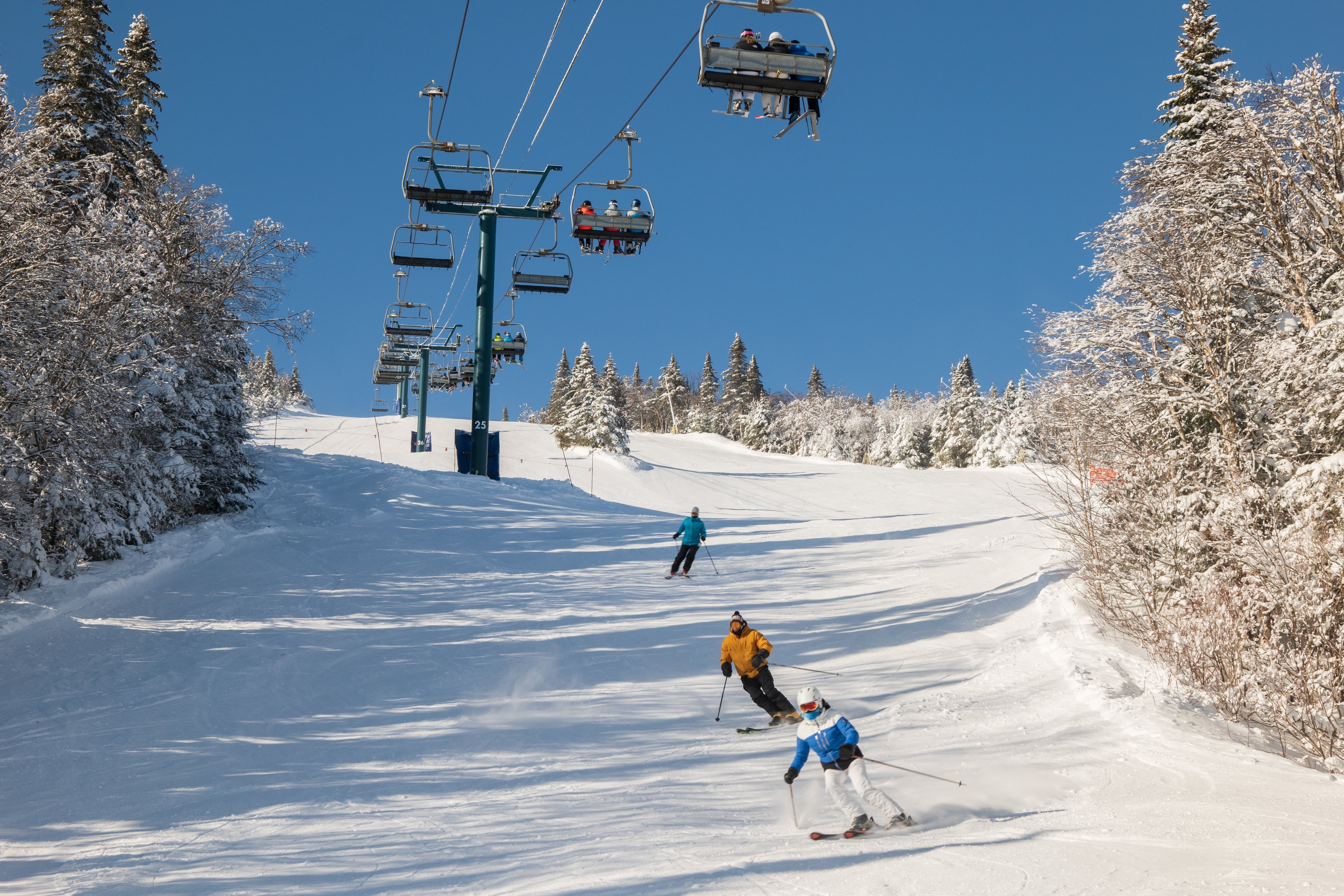
Ready To Ski? Protect Your Knees
Every year, thousands of skiers will sustain a knee injury, cutting their season short. While some are caused by unavoidable accidents, some injuries can be prevented. Preparation, mindfulness, and a proactive approach can make all the difference between a day on the slopes and an unforeseen trip to the emergency room.
The medial cruciate ligament (MCL) and anterior cruciate ligament (ACL) are the most prone to injuries when skiing. These ligaments contribute to the stabilization of the knee, and can become compromised in high-speed/high-impact sports such as skiing.
Here are some practical steps skiers can take to minimize the risk of injury and ensure a safer and more enjoyable experience on the mountain.
Before the Season
Get your legs in ski shape.
Skiing requires strength and stability. We rely on our lower body, primarily, to carry out these demands, and just like we would rehearse a dance to memorize the steps, we must also practice the movements required in skiing in order to avoid injury.
Many of us have desk-job lifestyles that leave our lower bodies slightly misshapen; we sit in chairs all day, which tightens up our hips while weakening our rear leg muscles. Squats and lunges, in addition to hip stretches and deadlifts, are examples of exercises that strengthen both sides of the legs––the quad muscles in front and the hamstring muscles in back.
When skiing, weight and an exceptional amount of force is applied to the legs, often one at a time. To prepare for this, skiers should practice single-leg balancing and gluteal strengthening exercises. Simply stand on one foot for 30 seconds at a time. Even better: Try single-leg squats. The leg strength you build will improve your stability. That’s great for your knees.
During Your Runs
Know your skill level.
Don’t let your pride get you hurt. Stay off tough courses or runs if you don’t have the experience to handle them.
One sign that you’re out of your comfort zones: Your form starts to suffer. You should be able to comfortably maintain an aggressive, forward-leaning posture. If the grade intimidates you, you’ll unconsciously hang back a little. Sit back too far, you’ll tumble backward, and that’s how you may tear your ACL.
Listen to your body.
Many skiers get hurt when their energy levels drop. Observe how you feel. Stay fed. Stay hydrated. Recognize when you need to rest.
Know how to fall.
You can’t avoid every fall. If you feel one coming, and you can’t stop it, don’t resist. Learn to fall into your momentum.
It’s our instinct to lean away, or twist ourselves sideways to slow down. But herky-jerky movements like that put too much tension on our knee ligaments- and then, sometimes they snap.
When to See Us
In spite of all your preparation, you may still get hurt. MCL and ACL injuries come with similar symptoms: pain, swelling, and a feeling of instability around the knee.
It's important to call your doctor for a diagnosis — a torn MCL will usually get better with therapy or possible non-surgical orthopedic techniques, but an ACL injury often requires surgery. The two injuries can happen together, and an MRI or ultrasound can help tell them apart.
Dr. Jeff Orr is an orthopedic specialist seeing patients at the Barton Center for Orthopedics & Wellness in South Lake Tahoe, CA and the Tahoe Orthopedics and Sports Medicine offices in Carson City, and Stateline, NV. Dr Orr will host a free Wellness Webinar, “Advancements in ACL Repair & Recovery” on Thursday, December 14 at 5 p.m. Register in advance, or view previously recorded webinars at BartonHealth.org/Lecture. Learn more at BartonHealth.org or by calling 530.543.5554.